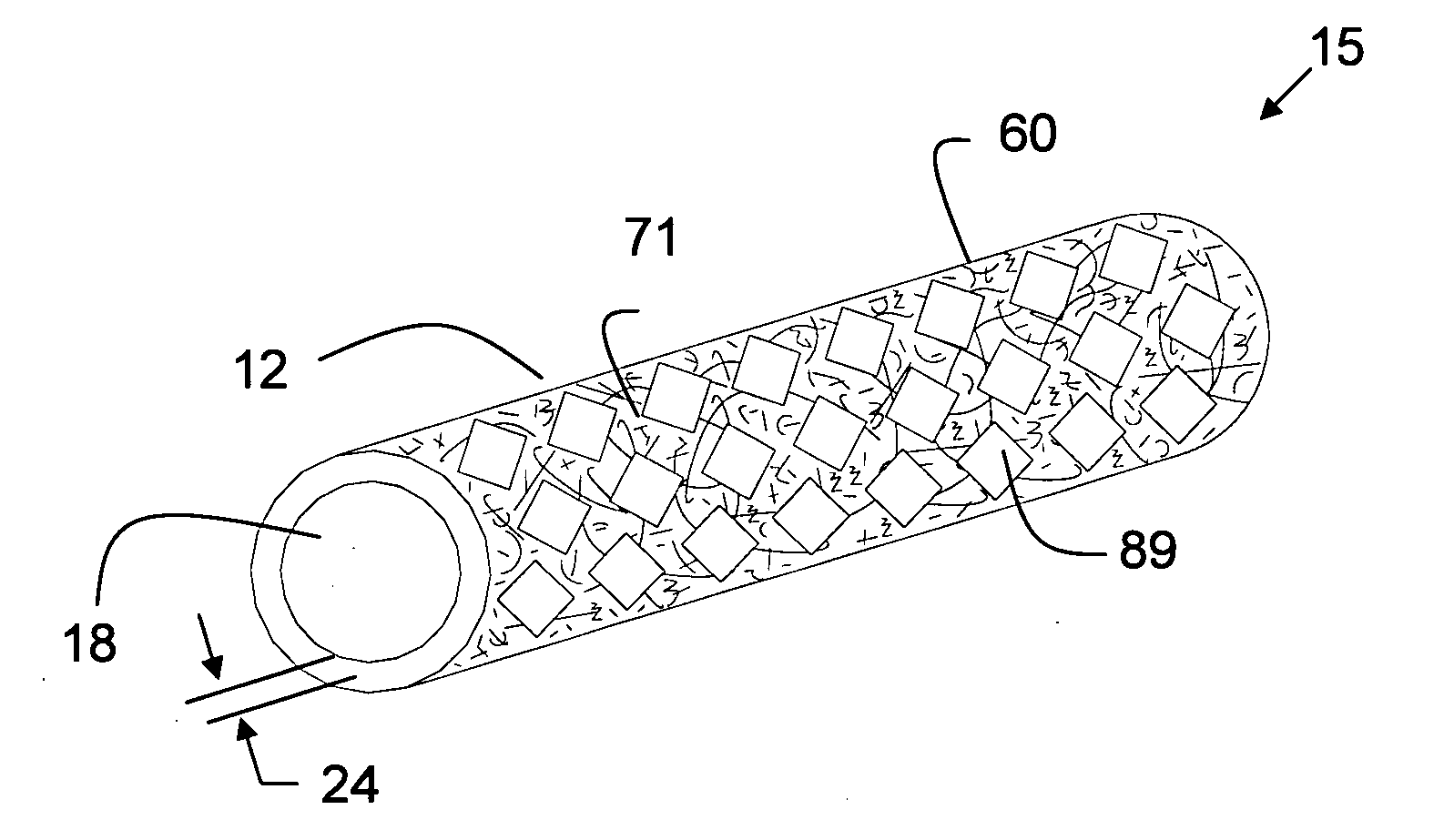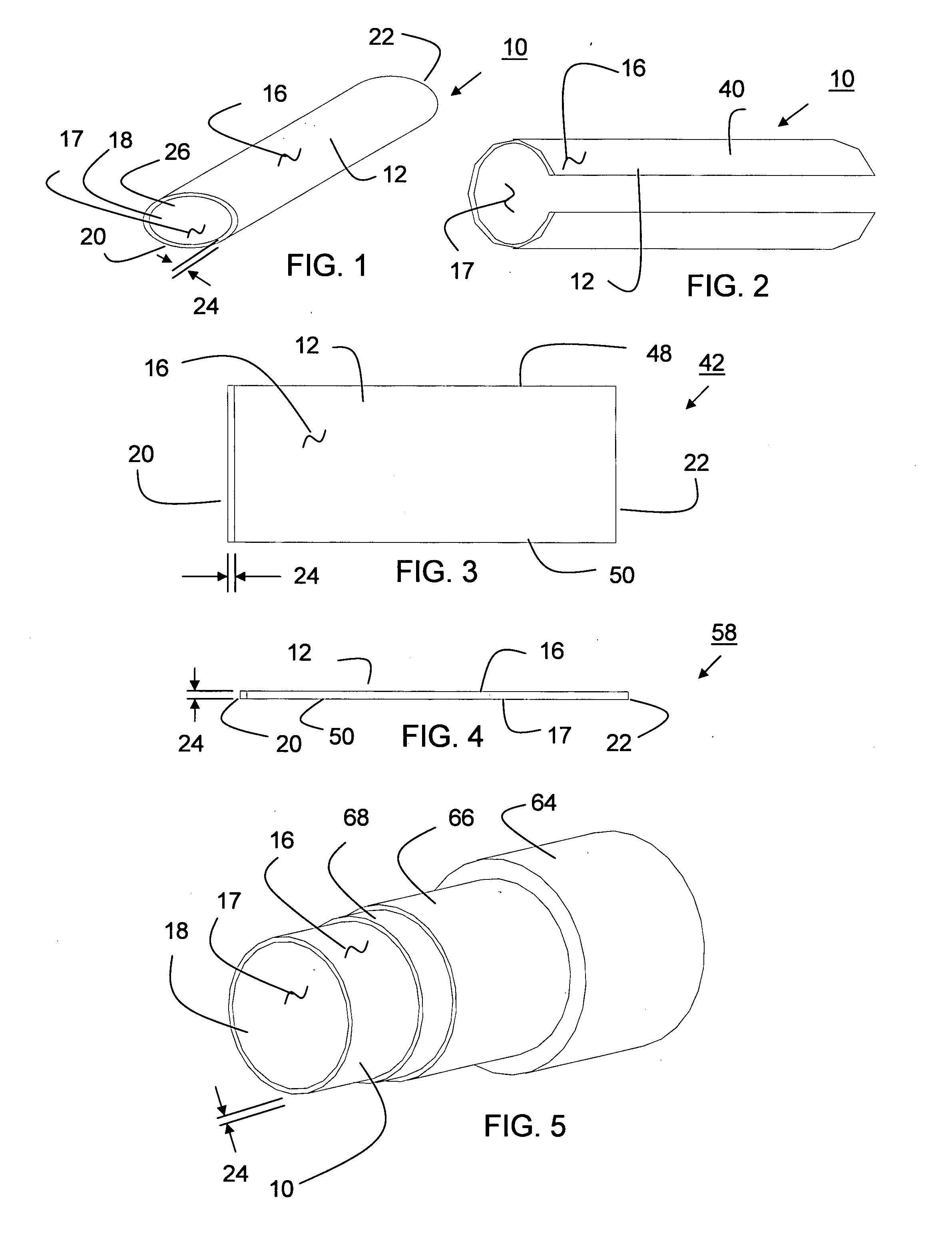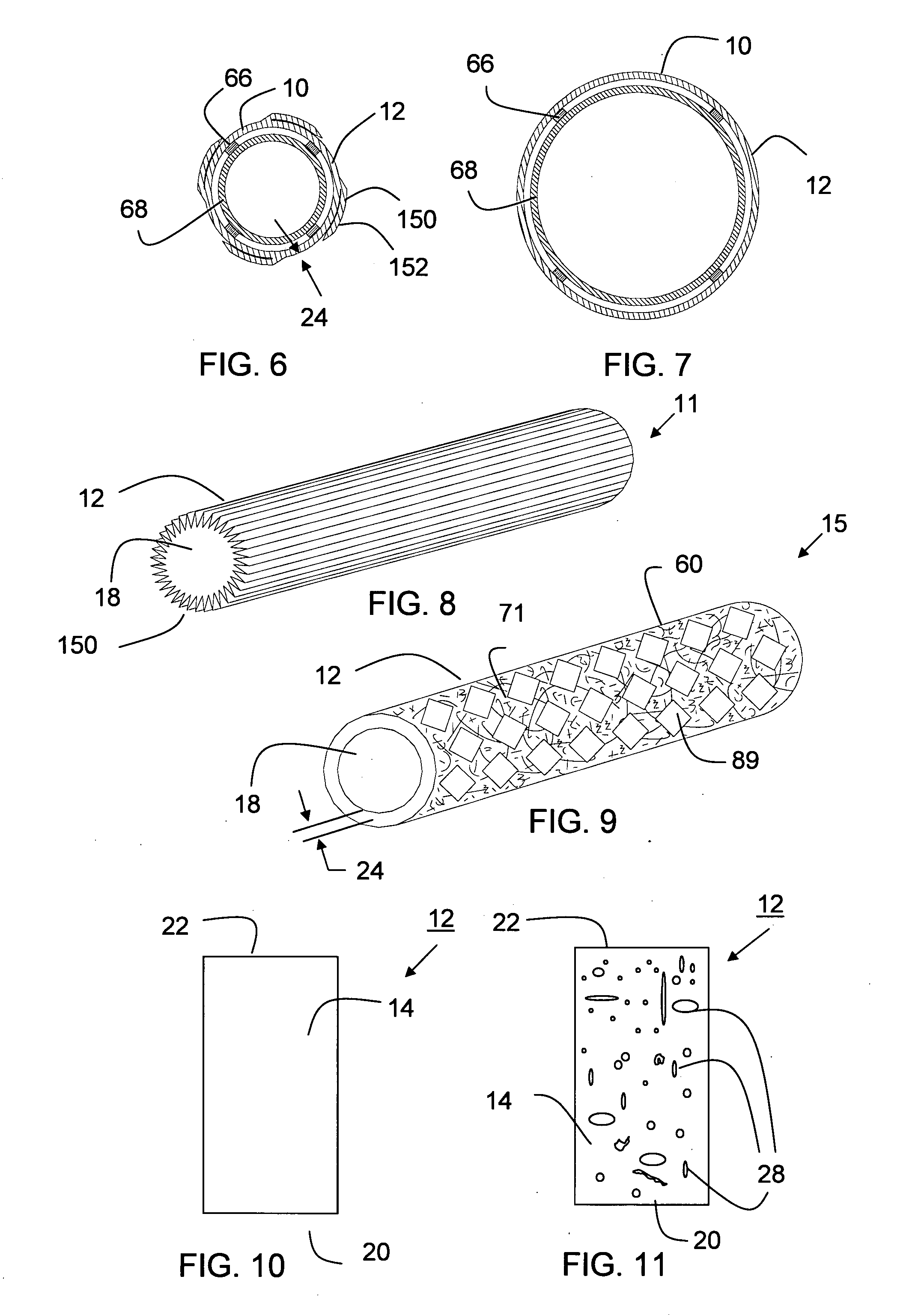Tear and abrasion resistant expanded material and reinforcement
- Summary
- Abstract
- Description
- Claims
- Application Information
AI Technical Summary
Benefits of technology
Problems solved by technology
Method used
Image
Examples
example 1
Expanded Material Used As Vascular Grafts
[0304] A thin wall, cylindrical shaped expanded tubular profile having a diameter of approximately 6 mm and a wall thickness of approximately 0.10 mm made of two layers of expanded material comprising polytetrafluoroethylene (PTFE) material having a structure including fibrils and voids that includes a plurality of glass nano fibers and nano size silicon dioxide crystals is converted into a prosthesis for a medical application. The fibrils of the expanded material have a mean length in the range of about 15-25 microns. The prosthesis is used as a coronary artery bypass graft (CABG) in a medical procedure. The prosthesis includes a microencapsulated active ingredient positioned between the two layers of expanded material that is delivered to the patient after installation over a period of 90 days in a descending rate to minimize the rejection of the prosthesis in the human body. Other examples were produced in diameters ranging in size from a...
example 2
Reinforcements of Formable Composite Used In Stenting Procedures
[0305] A cylindrical shaped reinforcement having a diameter of 6 mm is comprised of a wall thickness having a plurality of rectangular shaped open cells surrounded by member segments having a rectangular cross section. The member segments having a thickness of about 0.0762 mm (0.003 inches) near the first and second ends and about 0.127 mm (0.005 inches) near middle are made of a formable composite including a plurality of deformable elements encapsulated in a binder of polytetrafluoroethylene (PTFE). Samples are produced using discontinuous deformable elements made of stainless steel and Nitinol®. Samples are produced wherein the deformable elements range in size from 10 to 500% the length of the member segments. Samples are produced wherein the ratio of first size to second size ranges from about 1:2 to 1:10. Other samples are prepared for neurological applications having a diameter of about 2 mm and larger sizes lik...
example 3
Expanded Material and Reinforcement Used as Stent-Graft
[0308] The expanded materials of Example 1 are combined with the reinforcements of Example 2 to produce stent-grafts. The stent-grafts are surgically implanted in a human body blood carrying passageway to repair an aneurismal vessel.
PUM
| Property | Measurement | Unit |
|---|---|---|
| Length | aaaaa | aaaaa |
| Thickness | aaaaa | aaaaa |
| Thickness | aaaaa | aaaaa |
Abstract
Description
Claims
Application Information
 Login to View More
Login to View More - R&D
- Intellectual Property
- Life Sciences
- Materials
- Tech Scout
- Unparalleled Data Quality
- Higher Quality Content
- 60% Fewer Hallucinations
Browse by: Latest US Patents, China's latest patents, Technical Efficacy Thesaurus, Application Domain, Technology Topic, Popular Technical Reports.
© 2025 PatSnap. All rights reserved.Legal|Privacy policy|Modern Slavery Act Transparency Statement|Sitemap|About US| Contact US: help@patsnap.com



